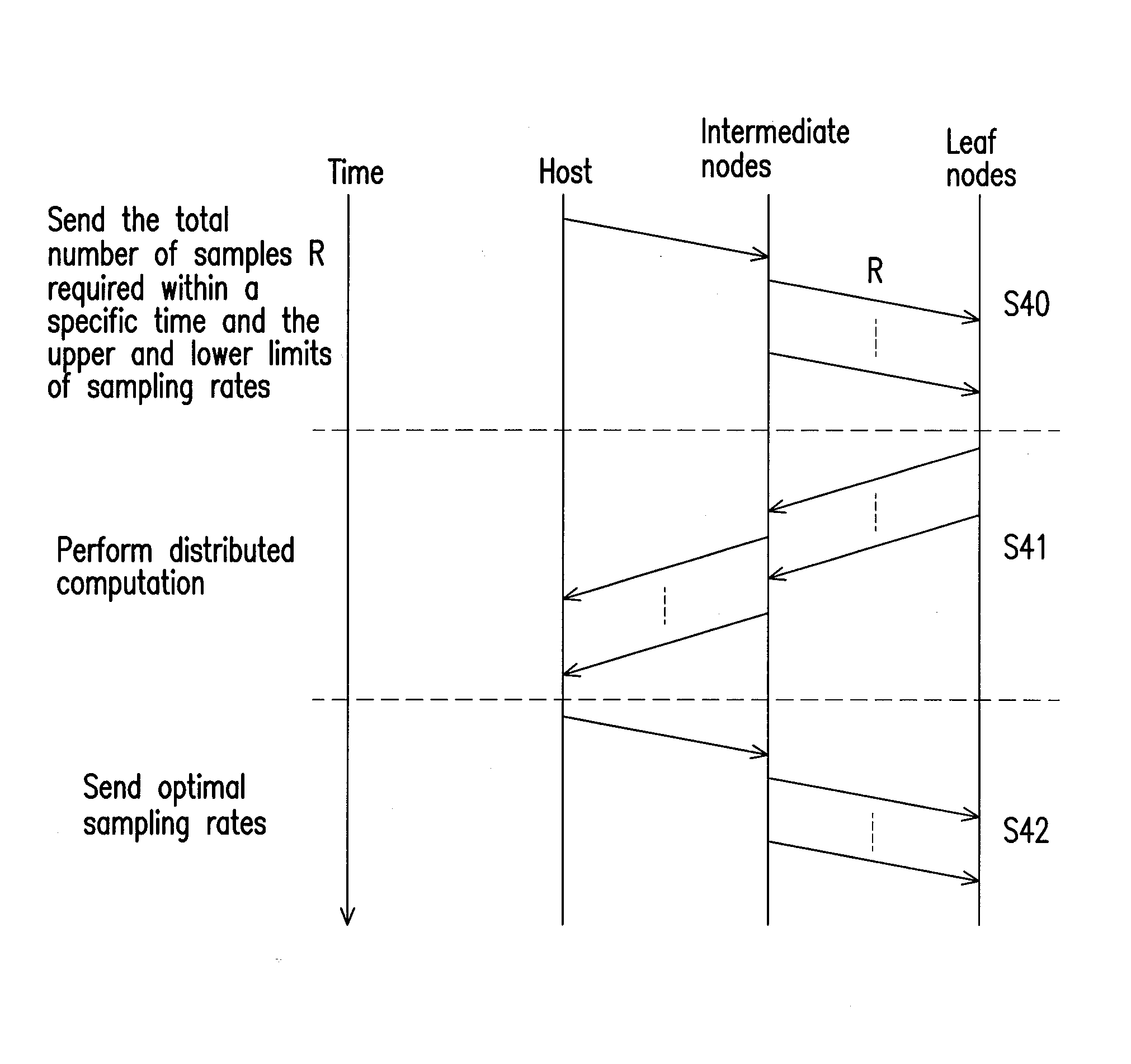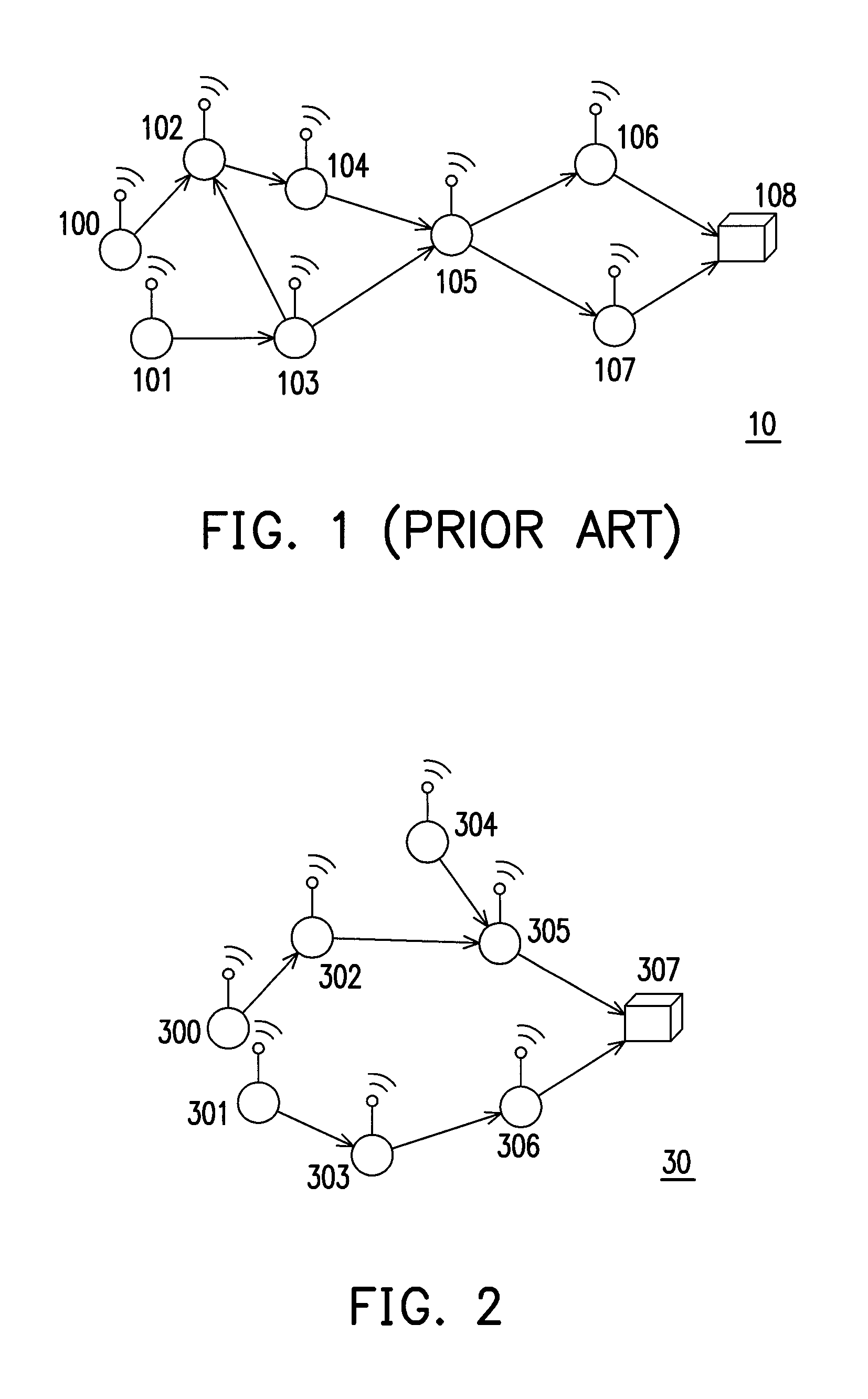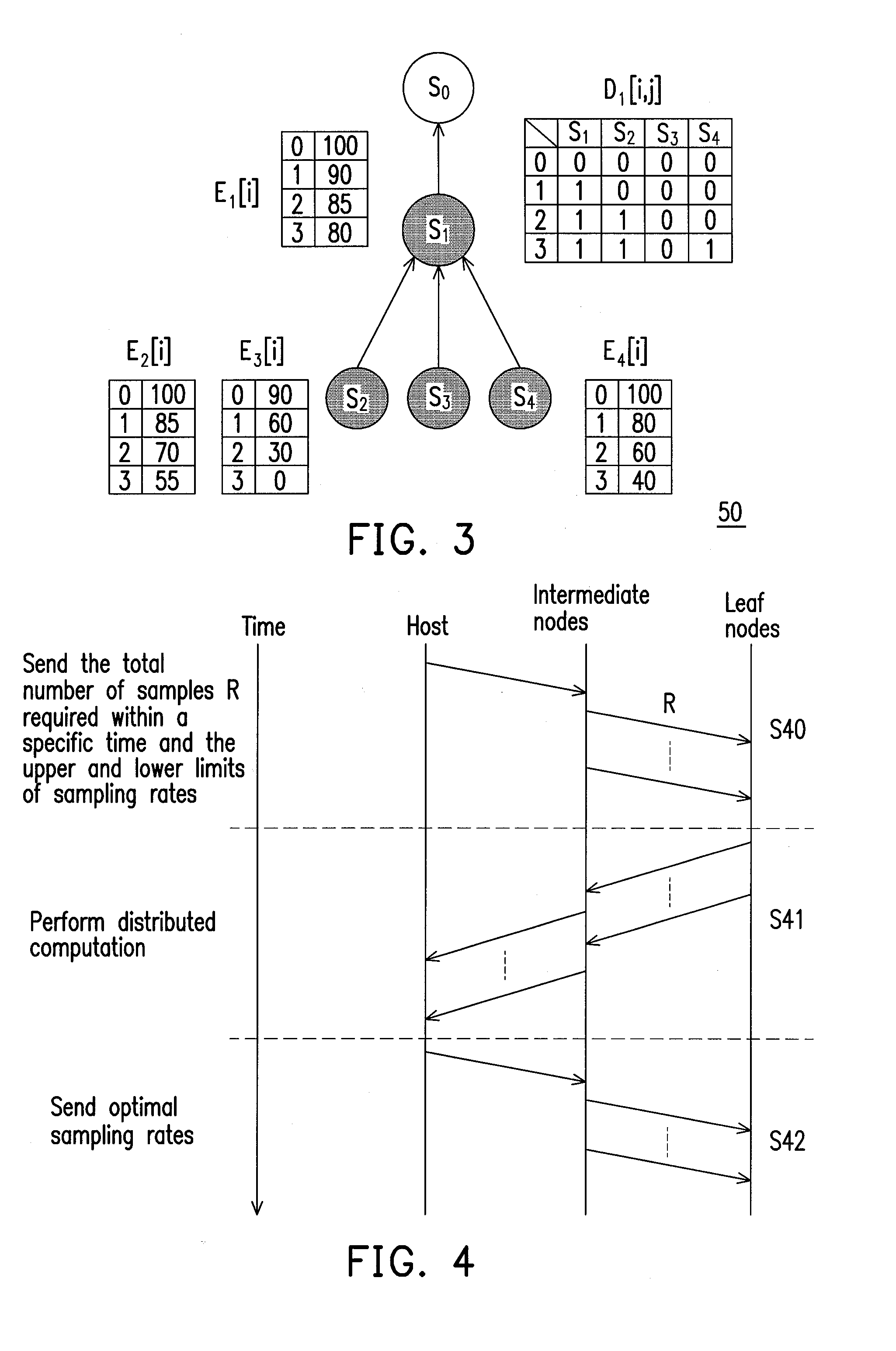Wireless sensor network and sampling rate allocation method thereof
a sensor network and wireless sensor technology, applied in the field of wireless sensor network and sampling rate allocation method thereof, can solve the problems of increasing the cost of node batteries, and consuming additional energy, so as to prolong the network life time and reduce the volume of batteries (for example, solar cells)
- Summary
- Abstract
- Description
- Claims
- Application Information
AI Technical Summary
Benefits of technology
Problems solved by technology
Method used
Image
Examples
example 1
[0049]The foregoing method for allocating a sampling rate by using the energy table and the decision table for a wireless sensor network will be described below with reference to an example. However, this example is not intended for limiting the scope of the present invention.
[0050]FIG. 3 is a schematic diagram of the wireless sensor network 50, wherein the energy table or decision table of nodes S1, S2, S3, and S4 have been calculated. As shown in FIG. 4, the wireless sensor network 50 includes a root node S0, an internal node S1, and leaf nodes S2˜S4. Referring to FIG. 3, E2[1] represents that the remaining energy of the node S2 after it provides a sample is 85, E2[2] represents that the remaining energy of the node S2 after it provides 2 samples is 70, and so on. The decision table D1 represents the optimal sampling rate allocation of the internal node S1 and its child nodes S2˜S4. When the internal node S1 needs to provides 3 samples to its parent node S0, the optimal sampling r...
example 2
[0070]An example showing how to calculate and establish an energy table and a decision table and how to allocate a sampling rate by using the energy table and the decision table through the method described in foregoing embodiment will be described below. However, this example is not intended for limiting the scope of the present invention.
[0071]FIG. 7 is a schematic diagram of a wireless sensor network 80 in tree topology. The nodes S2, S3, S4, S5, S6, and S7 can sense samples automatically, while the nodes S0 and S1 cannot sense samples. The nodes S2, S3, S4, S6, and S7 are leaf nodes, the nodes S1 and S5 are internal nodes, and the node S0 is the root node.
[0072]FIG. 8 is a parameter table of the nodes S0˜S7 in FIG. 7. Referring to both FIG. 7 and FIG. 8, if it is assumed herein that the total number of samples has value R=3 and ρ=∞ (i.e. the lower limit of the sampling rate is 0 and the upper limit thereof is R), according to the method described in foregoing embodiment, the nod...
example 3
[0080]The method for allocating sampling rates by using energy tables and decision tables in a wireless sensor network as described in foregoing embodiment will be described with reference to an example, wherein the sampling rates are allocated with upper limits and lower limits. However, this example is not intended for limiting the present invention.
[0081]FIG. 10 is a schematic diagram of a wireless sensor network 60 in tree topology. The nodes S0, S1, and S2 have already establish their energy tables or decision tables through the method described above, and the sampling rates of the leaf nodes S1 and S2 are allocated with upper limits and lower limits. As shown in FIG. 10, assuming the total number of samples R=300 and the upper and lower limits of the sampling rates of the nodes S1 and S2 are respectively [40,160] and [50,150]. As described above, the energy table of the node S0 records the remaining energy after the node S0 receives (50+40)=90 samples to 300 samples.
[0082]In o...
PUM
 Login to View More
Login to View More Abstract
Description
Claims
Application Information
 Login to View More
Login to View More - R&D
- Intellectual Property
- Life Sciences
- Materials
- Tech Scout
- Unparalleled Data Quality
- Higher Quality Content
- 60% Fewer Hallucinations
Browse by: Latest US Patents, China's latest patents, Technical Efficacy Thesaurus, Application Domain, Technology Topic, Popular Technical Reports.
© 2025 PatSnap. All rights reserved.Legal|Privacy policy|Modern Slavery Act Transparency Statement|Sitemap|About US| Contact US: help@patsnap.com



